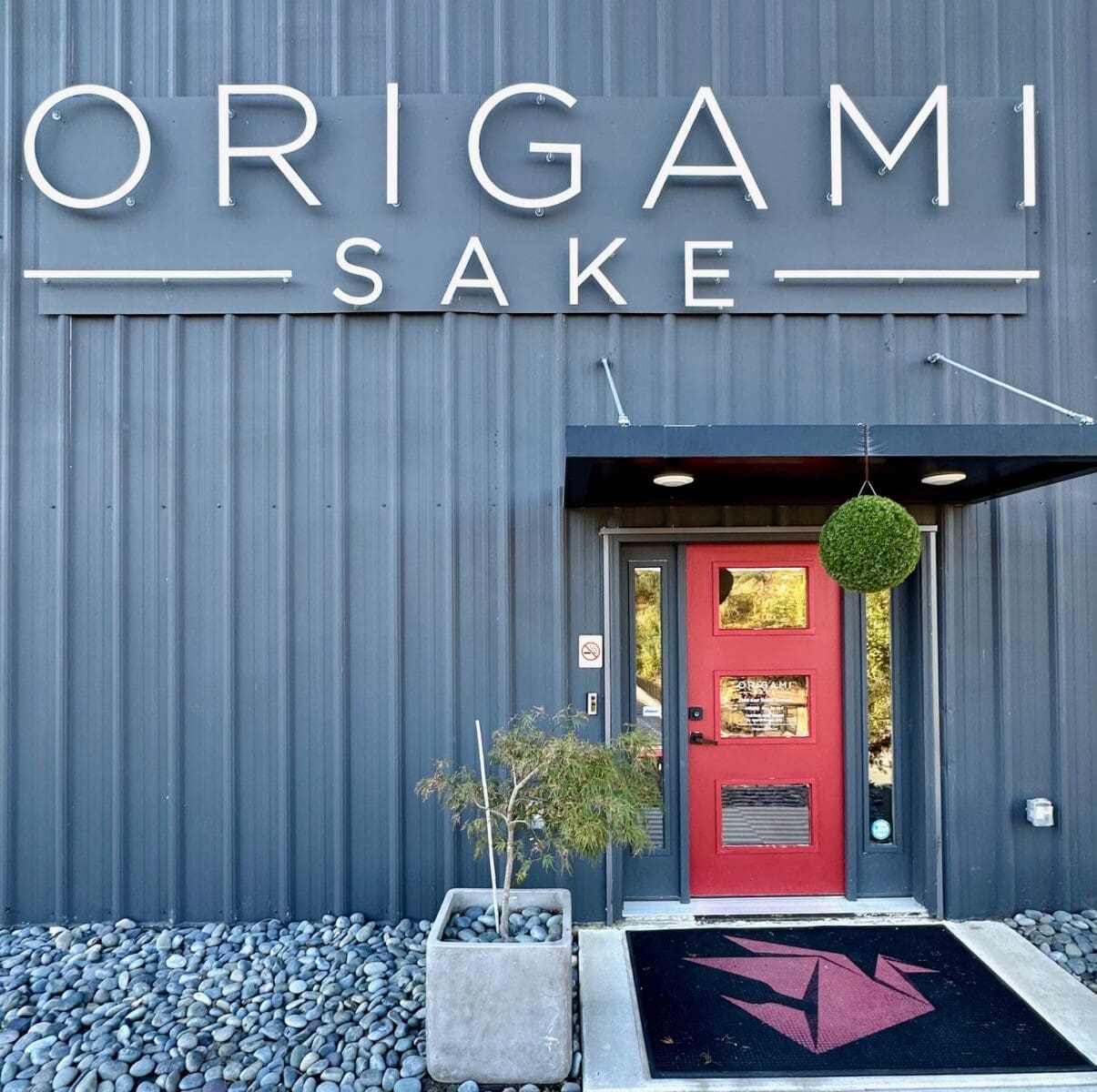
Most Americans don’t know a thing about sake. There’s even confusion about how to pronounce it, is it sah-key or sah-kay? Count me among them until I visited with Matt Bell, President and C.E.O. of Origami Sake at his brewery.
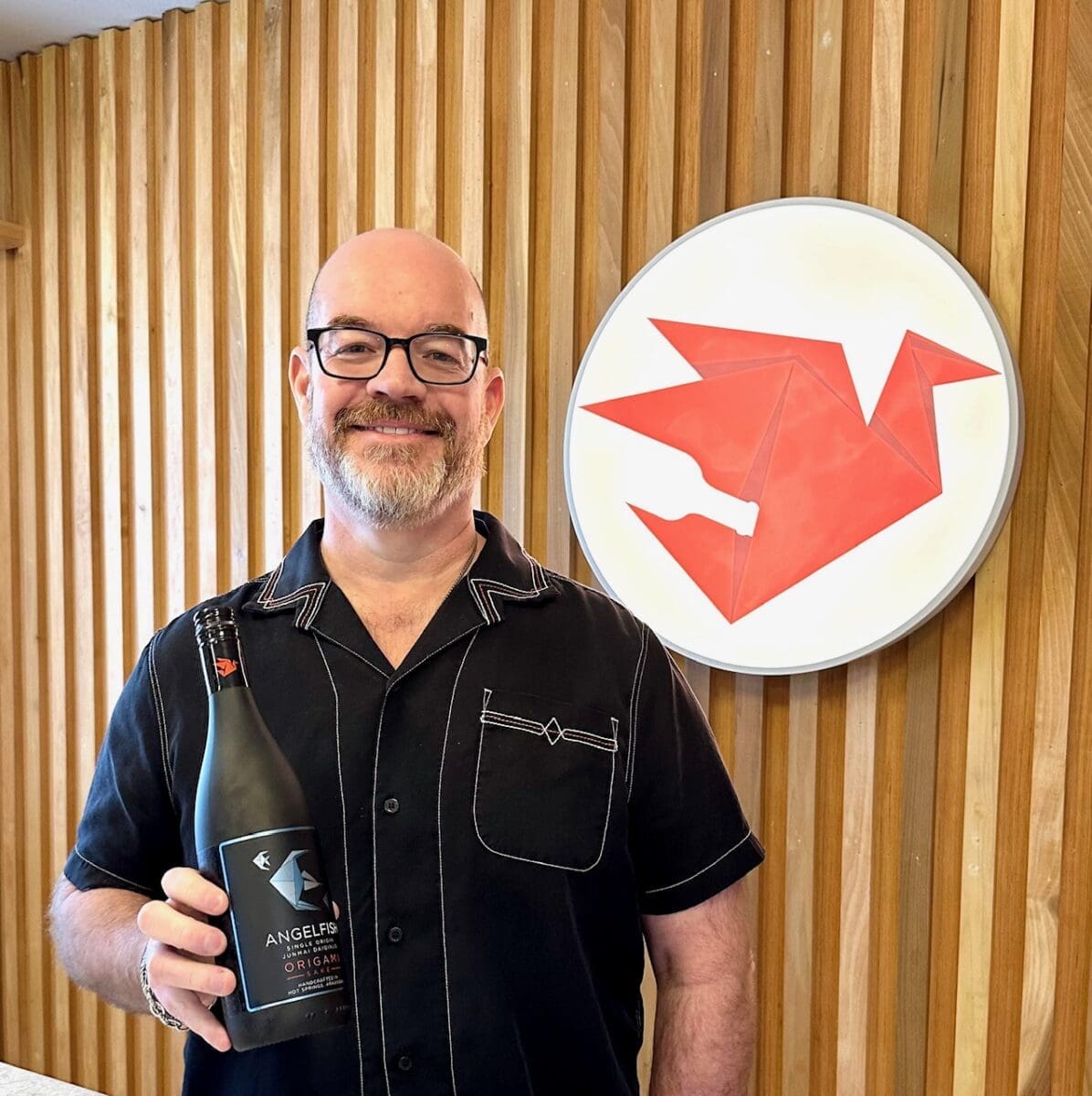
Matt and Ben Bell are on a mission to turn Hot Springs, Arkansas into the Napa Valley of American sake. Though their shared last name is purely coincidental, both are native Arkansans who connected through mutual friends and realized they had a common vision. In 2022 they co-founded Origami Sake, officially launching their product in 2023, which is now available in 10 states.
With world-renowned water and access to the country’s finest rice, Hot Springs provides the ideal setting for creating premium sake. From farm to bottle, Origami Sake is a 100% Arkansas-made beverage, with ambitious plans to expand nationwide to all 50 states by 2025.
Ouachita Mountain Valley Water
The Ouachita aquifer, much like the water used by top Japanese brewers, delivers mineral-rich, exceptionally pure water. Rainwater is naturally filtered through layers of sandstone, shale and quartz, taking 4,000 years to travel through the earth to re-charge and in Hot Springs re-emerge from deep granite fractures. This pristine water requires no special filtration or processing and its high mineral content makes it ideal for promoting robust and efficient fermentation. Naturally infused with calcium, magnesium and potassium the water imparts a uniquely clean, crisp flavor that sets it apart from any other.
Arkansas Rice
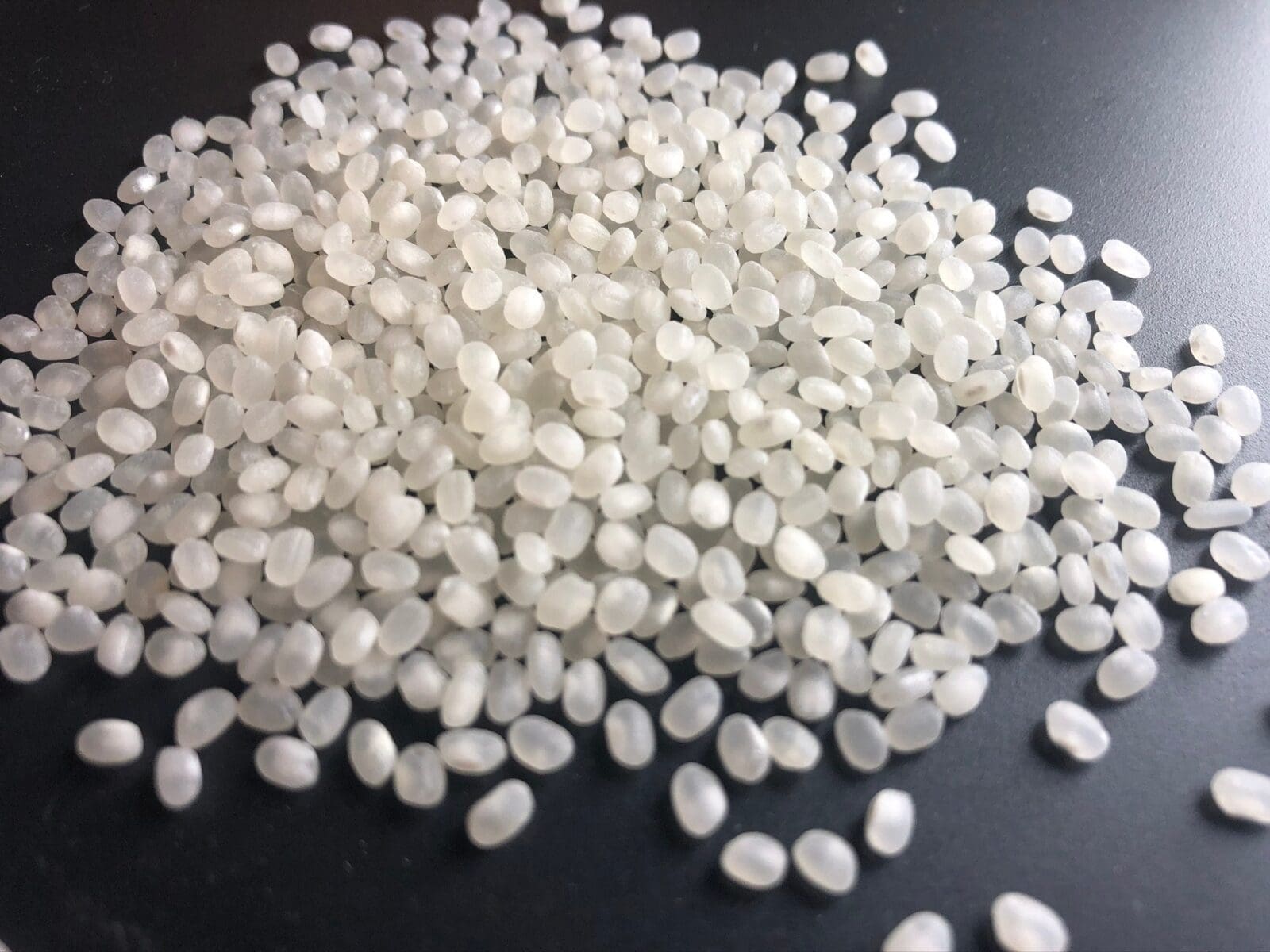
Any brewer, chef, distiller or winemaker will tell you that the finest ingredients are the key to exceptional food and drink. Isbell Farms, located in Humnoke, Arkansas is a leader in sake rice production, with over two decades of expertise in cultivating authentic Japanese strains like Yamada Nishiki, Omachi, Wataribune and Gohakumangoku. As the exclusive supplier for Origami Saki, these premium rice varieties play a crucial role in the quality and flavor of the final product.
The secret lies in the rice’s unique composition – lower in protein and higher in starch. This creates “shinpaku”, the small cloudy core at the center of each grain, essential for producing high quality sake.
The Brewing Process
Origami’s Toji, or brewmaster is Justin Potts, certified by the Japan Sake Service Society as both Master of Sake and Instructor. He shares his insight and knowledge about the many things that influence sake brewing, with us.
Different strains of rice, koji and yeast play major roles. Polishing, a process called “seimaibui” removes up to 80% of each rice grain and filtering clarifies the final product. All of these and the critical brewing choices of time and temperature determine the final flavor and aroma.
Like rice beer, sake production begins by steaming the rice to gelatinize its starch. The rice is then inoculated with koji (aspergillis oryzae) in a “clean room” to prevent contamination by rogue airborne molds or yeasts.
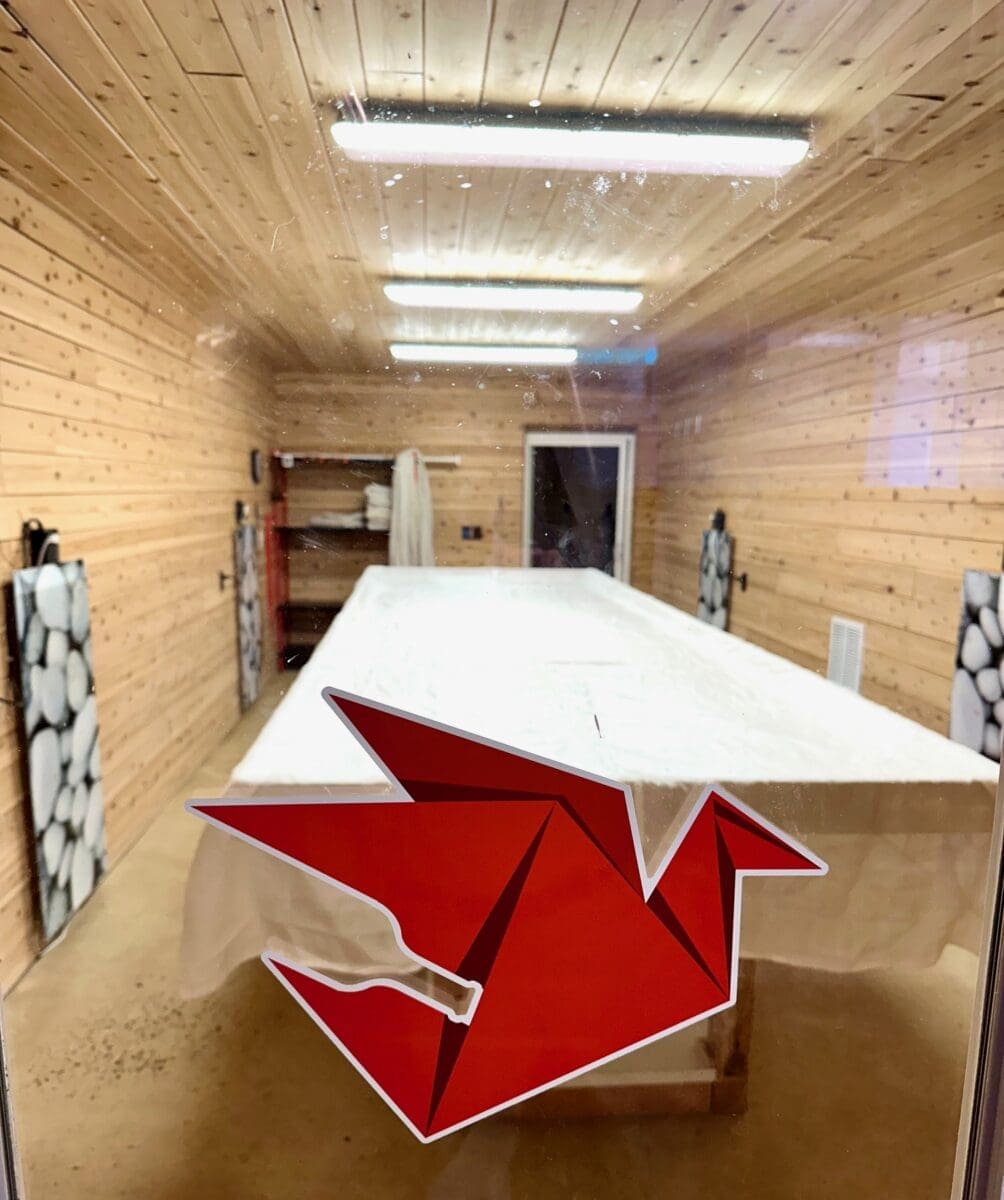
This process takes several days, during which the koji converts the starch into fermentable sugars. Koji is also used in other traditional Japanese foods like soy sauce and miso, contributing to their signature umami flavor.
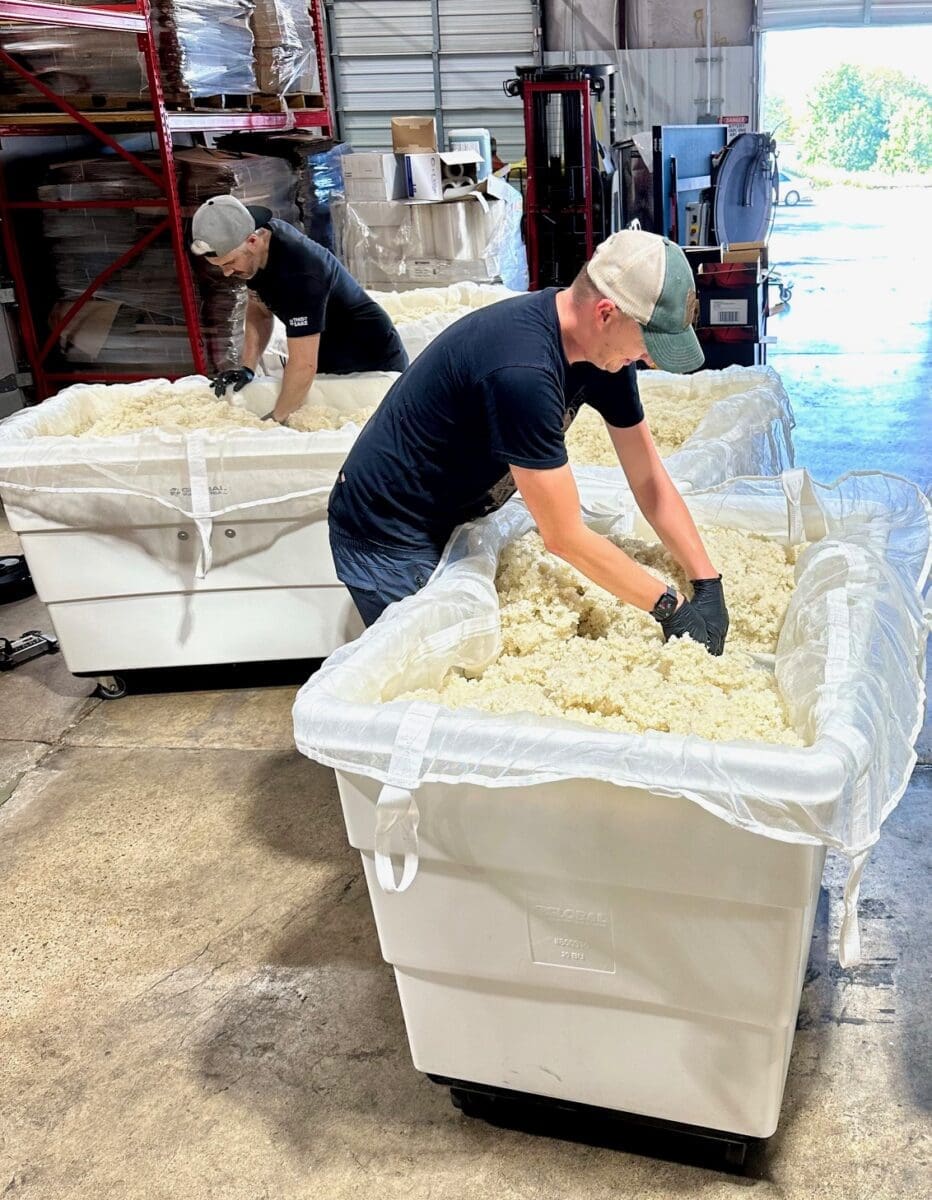
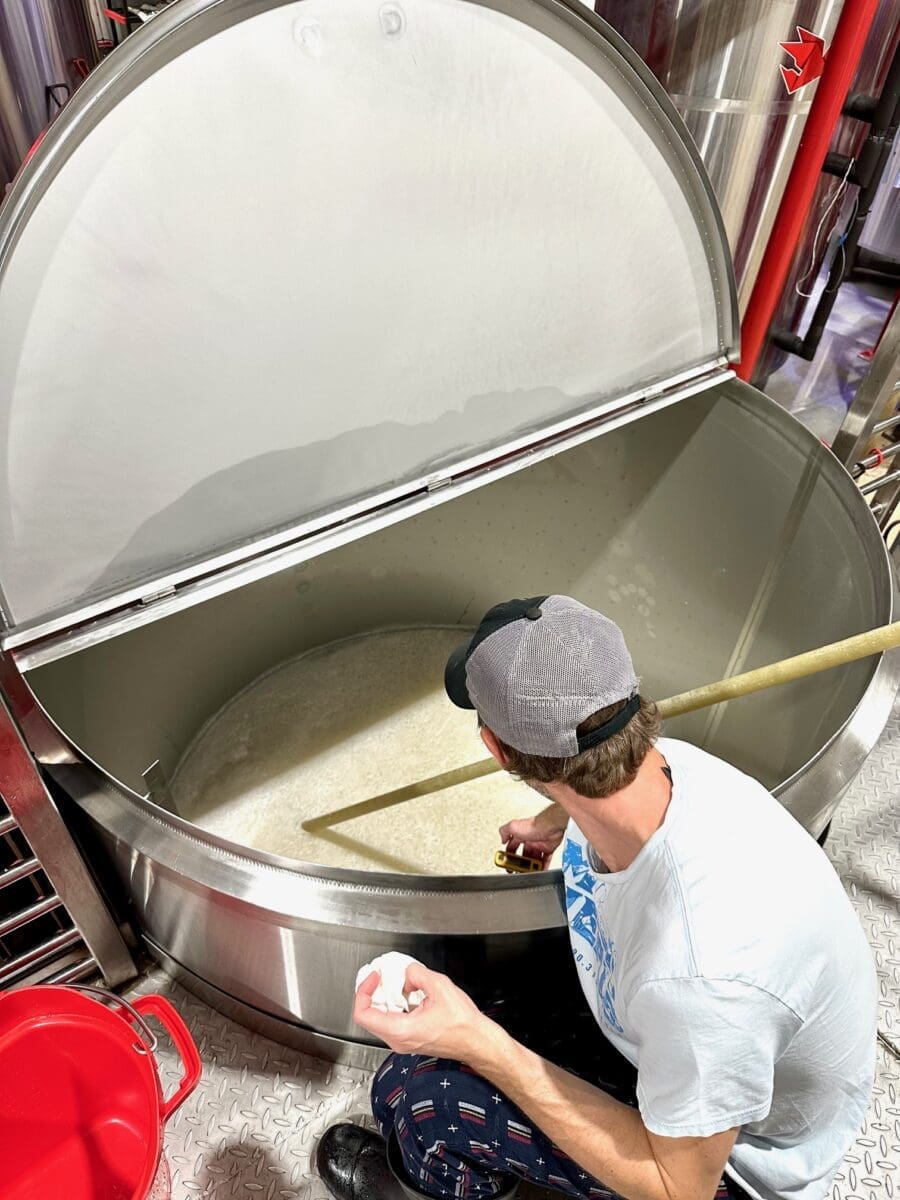
Once the rice is ready, it’s mixed with water and special yeast strains to ferment, a process that can take weeks or even months. This fermentation develops the alcohol, flavors and aromas of the sake. Afterward the sake is pressed to separate the lees (solids), pasteurized, aged in tanks and finally bottled ready to be enjoyed.
Regardless how the Toji chooses to create each specific sake, all follow a basic process illustrated below.
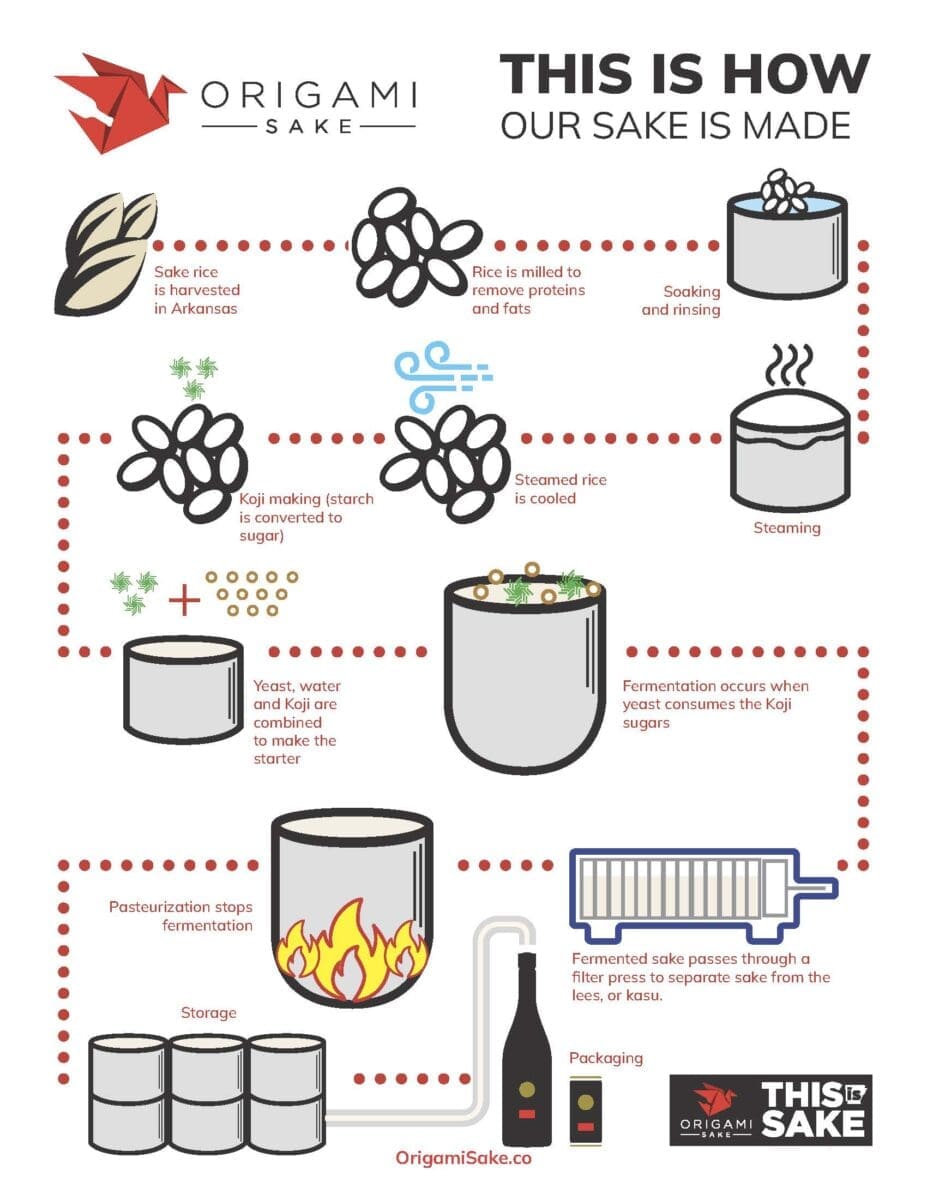
Demystifying Sake
For many Americans, sake can feel mysterious and intimidating, partly due to Japanese packaging. Traditional sake bottles often feature labels written entirely in Japanese, making it difficult for non-Japanese speakers to decipher key information about the product. Words like junmai, ginjo and daiginjo can be confusing, describing different brewing techniques, rice polishing levels and flavor profiles. Without understanding these distinctions, it can be challenging for Americans to identify which type of sake might suit their taste. Demystifying sake by offering clear translations and explanations could help bridge this culture gap, making it easier for newcomers to discover and appreciate the diverse world of sake.
The Origami Sake Product Line
Origami Sake chose the Japanese art of paper-folding as its name because it’s widely recognizable and easy to remember. Each product like Angelfish or A Thousand Cranes is paired with a matching origami design on the label. That makes it easier for customers to identify and recall their favorites.
Three sakes are currently available in Arkansas, Colorado, Florida, Illinois, Mississippi, Missouri, New Jersey, Nevada, Texas and Tennessee. Two more, American Lady and Dragonfly are near release and their experimental label, The Fold, is available at the brewery.
White Lotus
This is a junmai nigori type sake, 12.5% ABV, unfiltered and hazy colored with sweet, fruity flavors and a creamy finish. It can be enjoyed chilled or warm and pair it with boldly spiced food like pork belly.
A Thousand Cranes
A junmai style sake with fruity flavor and aroma. It is 14.5% ABV, filtered for clarity, refined in flavor and appearance. Pair this with cheese, fish and noodle dishes. Chill and sip on its own, with a meal, or in cocktails.
Angelfish
A junmai Daiginjo sake using highly polished yamada nishiki rice and additional brewer’s alcohol to achieve a 15% ABV. Fruit forward and light with notes of pear, honeydew melon and fig.
The Fold
An experimental, limited release junmai sake is made with 70% polished rice and a 15% ABV
Sustainability

The team at Origami Sake believes in a sustainable, environmentally friendly footprint . It begins with rice from an award winning producer using the latest technology to minimize energy and water consumption. On site, a huge solar array provides all their energy and water is supplied by a deep water well. The lees, or leftover rice solids become prized American wagyu cattle feed!
Raising a Glass to the Future
Exciting things are unfolding here in Arkansas and Origami Sake is at the forefront. This homegrown brewer is putting a unique spin on traditional sake, blending Japanese craftsmanship and artistry with Arkansas innovation. And to answer our opening question – it’s pronounced “Sah-kay”. So, next time you’re enjoying a great meal or a celebratory moment, raise your glass and toast with a hearty Kanpai!
